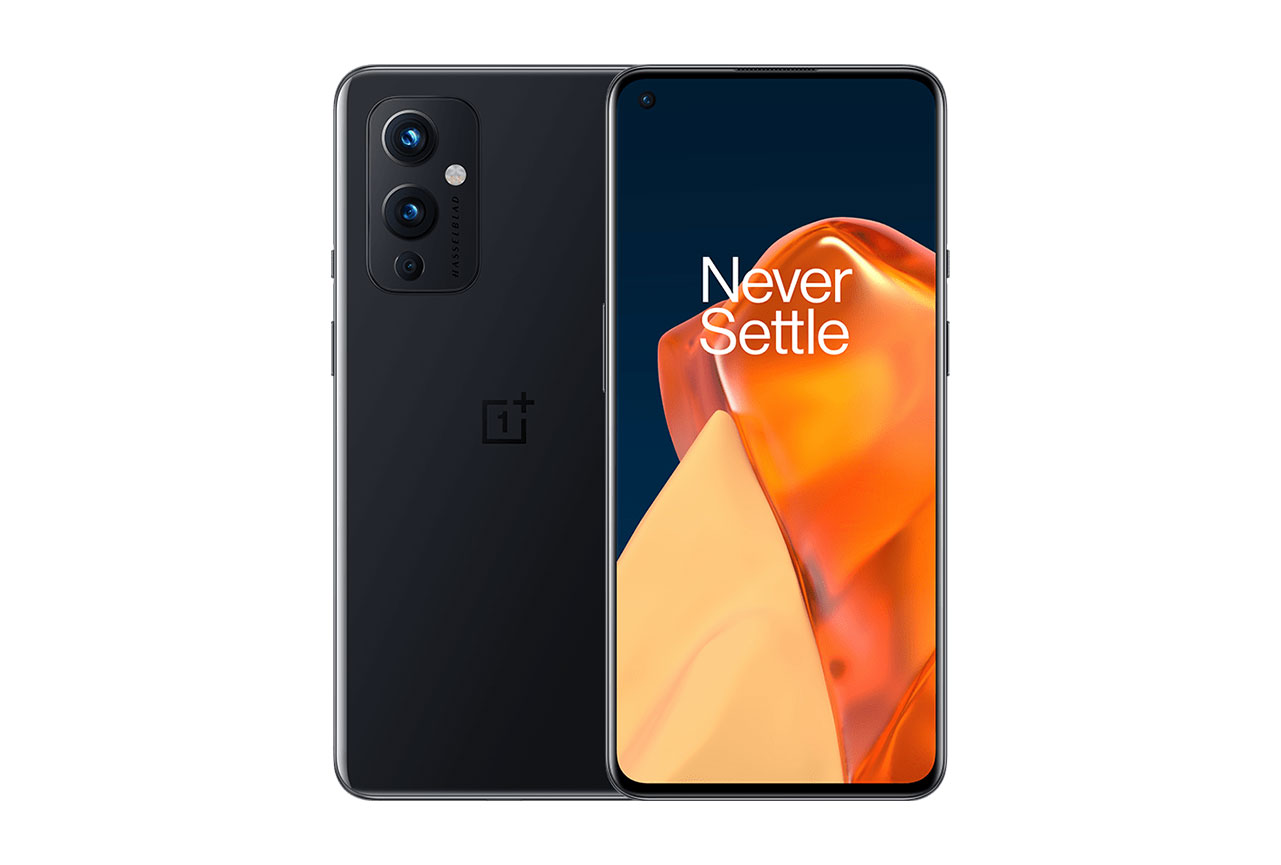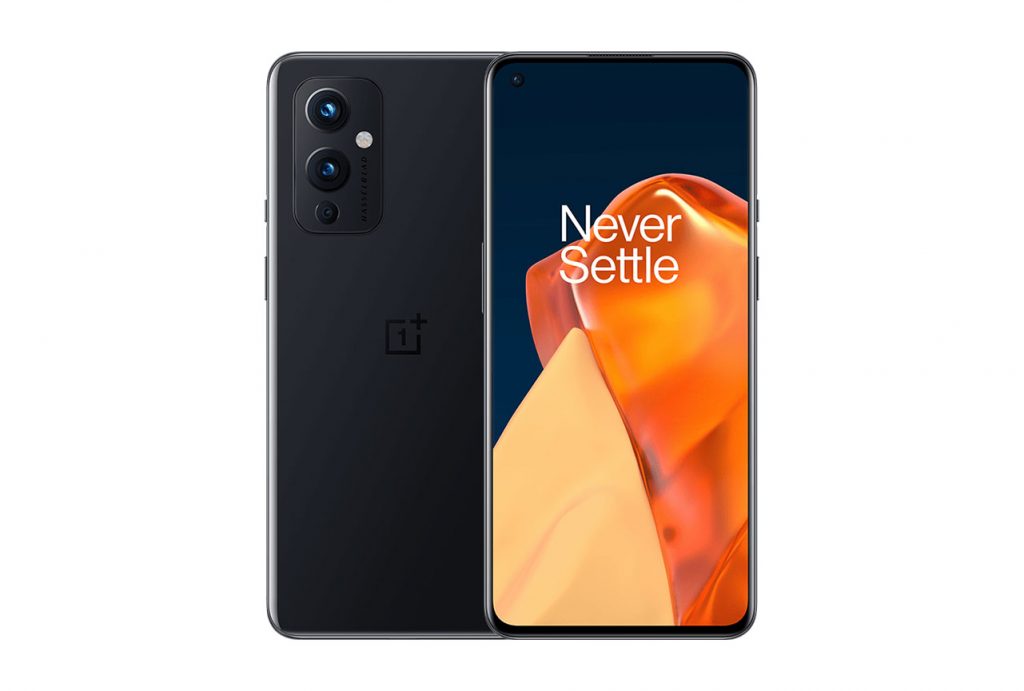Released in March 2021, the OnePlus 9’s launch price places it in the Premium ($600-$799) segment. As such, it comes packed with many attractive features, including a powerful Qualcomm Snapdragon processor and stereo speakers with Dolby Atmos. Our engineers put the OnePlus 9 through our Battery protocol tests; here is a summary of the results.
Key specifications:
- Battery capacity: 4500 mAh
- 65W charger
- 15W wireless charging
- 6.55-inch, 1080 x 2400, 120 Hz AMOLED display
- Qualcomm Snapdragon 888 5G (5 nm) chipset
- Tested RAM / storage combination: 8 GB + 128 GB
About DXOMARK Battery tests: For scoring and analysis in our smartphone battery reviews, DXOMARK engineers perform a variety of objective tests over a week-long period both indoors and outdoors. This article highlights the most important results of our testing. (See our introductory and how we test articles for more details about our smartphone Battery protocol.)
Test summary
Scoring
Sub-scores and attributes included in the calculations of the global score.

OnePlus 9


Key performances
These key points are derived from the lab measurements during testing and do not figure into the overall score. The lab measurements, however, are used for the overall score.
 89th
89th
 13th
13th
Pros
- Two full days of autonomy with moderate use, best in its segment
- One of the best charging times in our database to date
- Decent on the go performance, best in its segment
Cons
- High consumption during video playback
- Falls short in efficiency
The OnePlus 9 provides a decent performance for a device in its price range, and sits squarely in the top half of our database. The Oppo Find X3 Neo beats the OnePlus by 4 points, thanks to its better autonomy and efficiency scores, but the OnePlus comes in above both the Xiaomi Mi 11 and the Samsung Galaxy S21 5G (Snapdragon). We compared the OnePlus 9’s performance in several key categories with these other three Premium-segment devices; battery capacity, charger, display type and resolution, and processor specifications for all four smartphones are shown in the table below.
|
OnePlus 9 |
Oppo Find X3 Neo | Xiaomi Mi 11 |
Samsung Galaxy S21 5G (Snapdragon) |
|
| Battery capacity | 4500 | 4500 | 4600 | 4000 |
| Charger | 65W | 65W | 55W | 25W |
| Wireless | 15W | No | 50W | 15W |
| Display type | OLED | OLED | OLED | OLED |
| Display resolution | 1080 x 2400 | 1080 x 2400 | 1440 x 3200 | 1080 x 2400 |
| Chipset | Qualcomm Snapdragon 888 5G | Qualcomm Snapdragon 865 5G | Qualcomm Snapdragon 888 5G | Qualcomm Snapdragon 888 5G |
Autonomy (56)
How long a battery charge lasts depends not only on battery capacity, but also other aspects of the phone’s hardware and software. The DXOMARK Battery autonomy score is composed of three performance sub-scores: (1) Stationary, (2) On the go, and (3) Calibrated use cases. Each sub-score comprises the results of a comprehensive range of tests for measuring autonomy in all kinds of real-life scenarios.
The OnePlus 9 comes in just behind the currently class-leading Oppo Find X3 Neo in the rankings of premium devices, and just edges out the Samsung. All three devices are far ahead of the Xiaomi Mi 11 (whose display in fairness has more pixels to handle).
The battery gauge on the OnePlus 9 accurately displays how much power remains.

Stationary
OnePlus 9
59
104
A robot housed in a Faraday cage performs a set of touch-based user actions during what we call our “typical usage scenario” (TUS) — making calls, video streaming, etc. — 4 hours of active use over the course of a 16-hour period, plus 8 hours of “sleep.” The robot repeats this set of actions every day until the device runs out of power.
The OnePlus 9 lasted 57 hours 24 minutes in our TUS tests, which is 1 hour 37 minutes less than the Oppo; the Xiaomi and the Samsung lasted 40 hours 05 minutes and 56 hours 22 minutes, respectively.
This means you can expect more than two full days of autonomy with the OnePlus 9 with average use. The OnePlus’s night management could have been better: the device loses 2.33% on average, while the Samsung and the Oppo lost 2%.

On the go
OnePlus 9
58
96
Using a smartphone on the go takes a toll on autonomy because of extra “hidden” demands, such as the continuous signaling associated with cellphone network selection, for example. DXOMARK Battery experts take the phone outside and perform a precisely defined set of activities while following the same three-hour travel itinerary for each device.
The OnePlus 9 posts the best score among its rivals in this review, with particularly good measurements for camera use and social apps compared to its rivals.

Calibrated
OnePlus 9
58
100
For this series of tests, the smartphone returns to the Faraday cage and our robots repeatedly perform actions linked to one specific use case (such as gaming, video streaming, etc.) at a time. Starting from an 80% charge, all devices are tested until they have expended at least 5% of their battery power.
With a score of 63, the Oppo Find X3 Neo did a better job than the OnePlus 9, especially during the video playback, where the OnePlus device put in a poor showing. In other use cases, however, the two devices are very similar, and both best the Xiaomi and the Samsung in almost all use cases.
Charging (104)
The DXOMARK Battery charging score is composed of two sub-scores, Full charge and Quick boost. Full charge tests assess the reliability of the battery power gauge; measure how long it takes to charge a battery from 0% to 80% capacity and from 80% to 100%; and measure how long and how much power the battery takes to go from an indicated 100% to an actual full charge. With the phone at different charge levels (20%, 40%, 60%, 80%), Quick boost tests measure the amount of charge the battery receives after being plugged in for 5 minutes.
A strong performance with its 65W charger puts the OnePlus 9 in first place in our ranking across our entire Battery protocol database to date, with the Oppo Find X3 Neo and its 65W charger slightly behind at 101. The Xiaomi and the Samsung are far behind (which is no great surprise, at least with respect to the Samsung, given its 25W charger).

Full charge
OnePlus 9
106
121
The OnePlus 9 goes from empty to a full charge in only 38 minutes 40 seconds, and takes only 21 minutes 22 seconds to go from 0 to 80%, which is truly impressive. The Oppo does a great job going from 0 to 80%, too, taking just 22 minutes 57 seconds.
The OnePlus 9 comes with a 55W wireless charger, but the smartphone supports only 15W wireless charging, drawing in only 10.7W on average; this results in a wireless charging time of 1 hour 57 seconds to achieve a full charge. By way of comparison, while the Xiaomi Mi 11 comes with a 50W charger, but its peak output is 36W and its average output is 22.8W, so its wireless charging time is 1 hour 14 minutes. Coming with a 15W wireless charger (with average output of 10.7W) and a smaller battery to fill, the Samsung takes 2 hours 40 minutes to reach a full charge.

Quick boost
OnePlus 9
94
111
With a five-minute charge at 20%, the OnePlus 9 can provide almost 8.5 additional hours, which is huge — one of the very best results in our database.
| OnePlus 9 | Oppo Find X3 Neo | Xiaomi Mi 11 | Samsung Galaxy S21 5G (Snapdragon) | ||
| Autonomy boost (hh:mm) | 20% | 8:26 | 8:20 | 2:52 | 2:38 |
| 40% | 5:59 | 6:26 | 3:09 | 2:45 | |
| 60% | 5:28 | 5:29 | 2:54 | 2:09 | |
| 80% | 4:02 | 4:14 | 1:51 | 1:57 | |
| Percentage boost | 20% | 23 % | 22.1 % | 11.2 % | 7.4 % |
| 40% | 16.3 % | 17 % | 12.3 % | 7.7 % | |
| 60% | 14.9 % | 14.5 % | 11.3 % | 6 % | |
| 80% | 11 % | 11.2 % | 7.3 % | 5.5 % | |
| Energy consumed | 20% | 4923 mWh | 4712 mWh | 2674 mWh | 1466 mWh |
| 40% | 3491 mWh | 3637 mWh | 2945 mWh | 1528 mWh | |
| 60% | 3188 mWh | 3103 mWh | 2709 mWh | 1195 mWh | |
| 80% | 2354 mWh | 2399 mWh | 1735 mWh | 1088 mWh |
Efficiency (78)
Our Efficiency score comprises two sub-scores, Charge up and Discharge. Charge up is the efficiency of a full charge (how much energy is drained from the wall outlet vs the energy capacity of the battery, as well as the efficiency of the charger and its residual consumption). Discharge is how much current the smartphone drains from the battery when in use (the ratio of battery capacity to autonomy). Better autonomy with a smaller battery means better efficiency.
Efficiency is not the OnePlus 9’s strongest point: despite the best charge up score to date, its discharge score is just average, so overall among the four devices in this comparison, it comes in third.

Charge up
OnePlus 9
84
105
The OnePlus 9 has the most efficient charger among tested devices to date, and thus the top score for this attribute, but its residual consumption when the smartphone is plugged in is high.

Discharge
OnePlus 9
74
121
The OnePlus 9 earns an average score in our database for discharge efficiency. The Samsung with its 4000 mAh battery puts in a good performance and achieves a score of 90; thanks to its fairly good decent results and its well-managed night discharge, the Oppo achieves an 85.
Thanks to well-controlled discharge current during use and well-managed night discharge, the Oppo achieves an 85. By contrast, the Xiaomi struggles here with much higher discharge current when used with its QHD display on.
Conclusion
The OnePlus 9 puts in a great performance for its price range, with two full days of autonomy, decent on the go results, and an especially impressive charger.



DXOMARK encourages its readers to share comments on the articles. To read or post comments, Disqus cookies are required. Change your Cookies Preferences and read more about our Comment Policy.